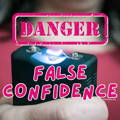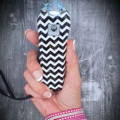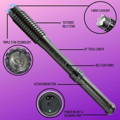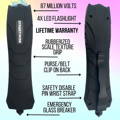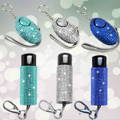“What are the odds that it will really happen to me? -Optimism Bias."
False Confidence: When Your Self-Defense Tool Might Be More Dangerous Than Helpful
Owning a self-defense tool can feel empowering. Whether it’s a stun gun tucked in your bag, pepper spray on your keychain, or a sleek tactical knife in your glove compartment, these items are often marketed as instant solutions to unexpected danger. But what many people fail to consider is this: without the right mindset and training, a self-defense tool can offer more false confidence than real protection and, in some cases, it might even increase your risk.
This article explores the psychological pitfalls of over-relying on self-defense tools, the potential dangers of mishandling them, and why pairing gear with practice is essential for true personal safety.
The Illusion of Safety
Purchasing a self-defense tool often gives a sense of reassurance. It’s a physical object you can hold in your hand, a symbol of taking charge of your own safety. That sense of empowerment is important but when it's based solely on possession and not ability, it can be dangerously misleading.
Consider this: someone walking to their car at night might feel emboldened because they have keychain pepper spray in their purse. But when startled by a sudden approach from behind, they fumble to find it. The safety switch is engaged. Their hand is shaking. In the critical moment, they’re unprepared and the tool becomes useless.
This is the gap between feeling safe and being safe.

The Psychology of False Confidence
False confidence arises when someone believes they’re prepared for a dangerous situation simply because they carry a weapon or tool. This belief can result from cognitive biases, including:
• Optimism Bias: The tendency to believe that bad things are more likely to happen to others, not ourselves.
• The Dunning-Kruger Effect: A cognitive bias where individuals with low ability at a task overestimate their competence.
Together, these mindsets can convince someone that they don’t need to train or practice. That simply owning a stun gun or a knife is enough to stop an attacker. Unfortunately, real-world encounters are rarely that simple. Stress, panic, and adrenaline interfere with motor skills and decision-making. Without muscle memory and clear instincts, tools can become difficult or even dangerous to use.
“Know your weapon. Respect your weapon. Train with your weapon.”
When Self-Defense Tools Backfire
While the idea of self-protection is commendable, improper use or unrealistic expectations can backfire and actually put you (or those around you) in a more dangerous situation.
Common Scenarios Where Things Go Wrong:
• Fumbling Under Pressure: Without practice, users may not know how to quickly deploy their tool. Pulling a folding knife from a locked blade, flipping a stun gun’s safety switch, or aiming pepper spray under stress is harder than it seems.
• Disarming and Misuse: An attacker who is physically stronger or more experienced may disarm the user and use the weapon against them, particularly in close contact situations.
• Collateral Damage: Pepper spray, when deployed in windy conditions or enclosed spaces, can harm the user as much as the target.
• Legal Trouble: Carrying a prohibited weapon across state or international borders can result in arrest, especially for those unfamiliar with local self-defense laws.
These situations aren’t just hypothetical. They happen regularly. When a self-defense tool is treated as a magic solution, rather than a tool requiring practice and respect, the risk of mishap rises significantly.
Tools + Training = Real Protection
To use self-defense tools effectively, users must understand that gear is just one part of a much larger safety equation. Real self-defense involves:
• Awareness: Being attuned to your surroundings and avoiding danger before it escalates.
• Mindset: Staying calm and decisive under pressure.
• Training: Repeated, hands-on practice that builds muscle memory.
• Tool Proficiency: Knowing your gear inside and out—how to carry, deploy, and use it in seconds.
Fortunately, building these skills doesn’t require thousands of dollars or advanced martial arts training. Many tools come with usage instructions and numerous safety educators offer affordable, real-world self-defense classes. Even basic exercises like practicing how to draw pepper spray quickly or role-playing scenarios with a friend can make a significant difference.
Best Practices for Safe, Responsible Use
If you choose to carry a self-defense tool, follow these tips to ensure you’re prepared to use it safely and effectively:
1. Know the Law: Research local and travel-related restrictions on self-defense gear. Some states ban certain knives, stun guns, or sprays.
2. Match the Tool to Your Comfort Level: If you’re not confident handling a blade, opt for a simpler tool like pepper spray or a keychain alarm.
3. Train for Realistic Scenarios: Practice drawing and deploying your tool from the exact place you carry it. For example, your purse, pocket, or glove box.
4. Carry It Consistently: A tool won’t help if it’s left at home. Make carrying it part of your daily routine.
5. Maintain the Tool: Check expiration dates, battery levels, and wear/tear regularly to ensure it works when needed.
6. Supplement With Non-Tool Skills: Learn verbal de-escalation techniques and situational awareness strategies that can help you avoid conflict altogether.
Debunking Common Self-Defense Myths
• “I’ll scare them off just by showing the tool.”
Whiles this can be true in many situations, some attackers are not easily intimidated, especially if they sense hesitation or lack of confidence.
• “Pepper spray is foolproof.”
Not if you spray into the wind, miss the target, or freeze during the encounter.
• “If I have a weapon, I’m safe.”
Having a tool without training can create a false sense of security and lead you into situations you might otherwise avoid.
Confidence Through Competence
Owning a self-defense tool can be an excellent step toward personal safety but only if it’s part of a bigger picture that includes knowledge, practice, and awareness. Confidence rooted in gear alone is fragile. Competence, on the other hand, is unshakable.
If you're going to carry a tool for self-defense, treat it like any life-saving device: know it, respect it, and train with it. Real protection isn't just about what you carry. It's about what you know and how ready you are to act.
Defense Divas® wants you to be equipped to defend yourself not only with a self-defense weapon, but also with the practical knowledge of safety awareness and prevention.
Follow us on your favorite social media platforms (@DefenseDivas) to receive safety tips, product videos and more in your daily feed. Leave us a comment and introduce yourself too!
Copyright©2025 All rights reserved. This article or any portion thereof may not be reproduced or used in any manner whatsoever without the express written permission of Defense Divas®.


